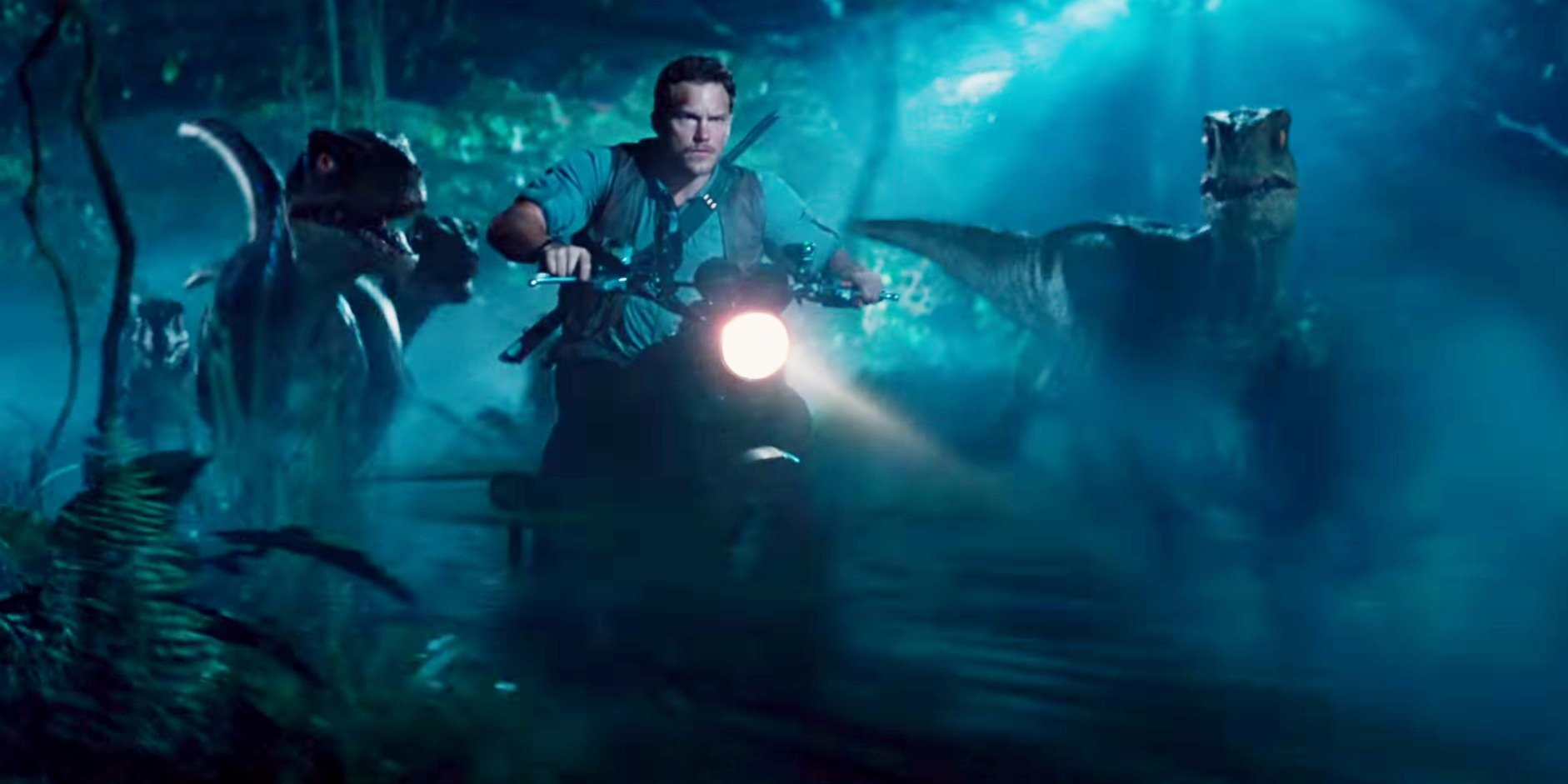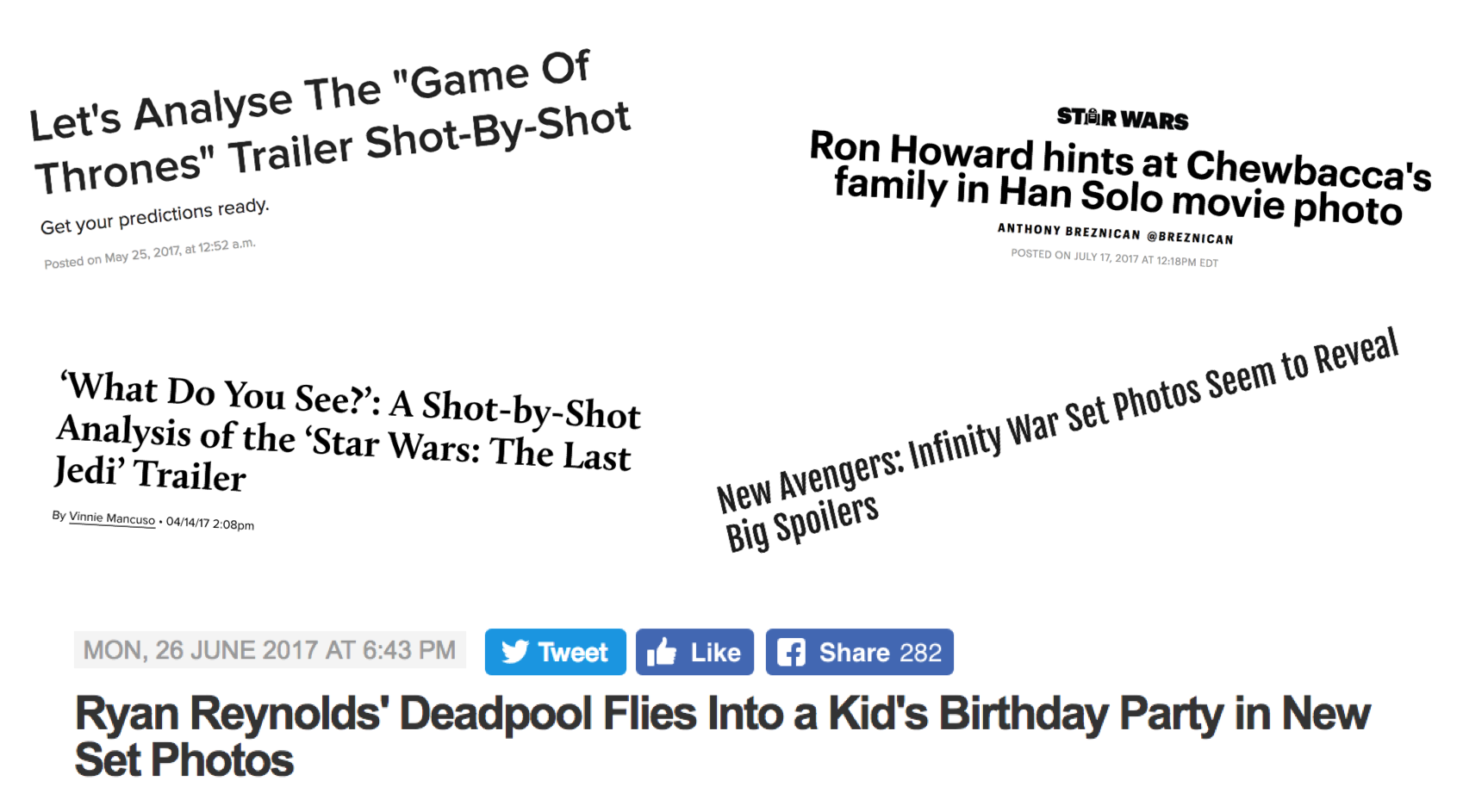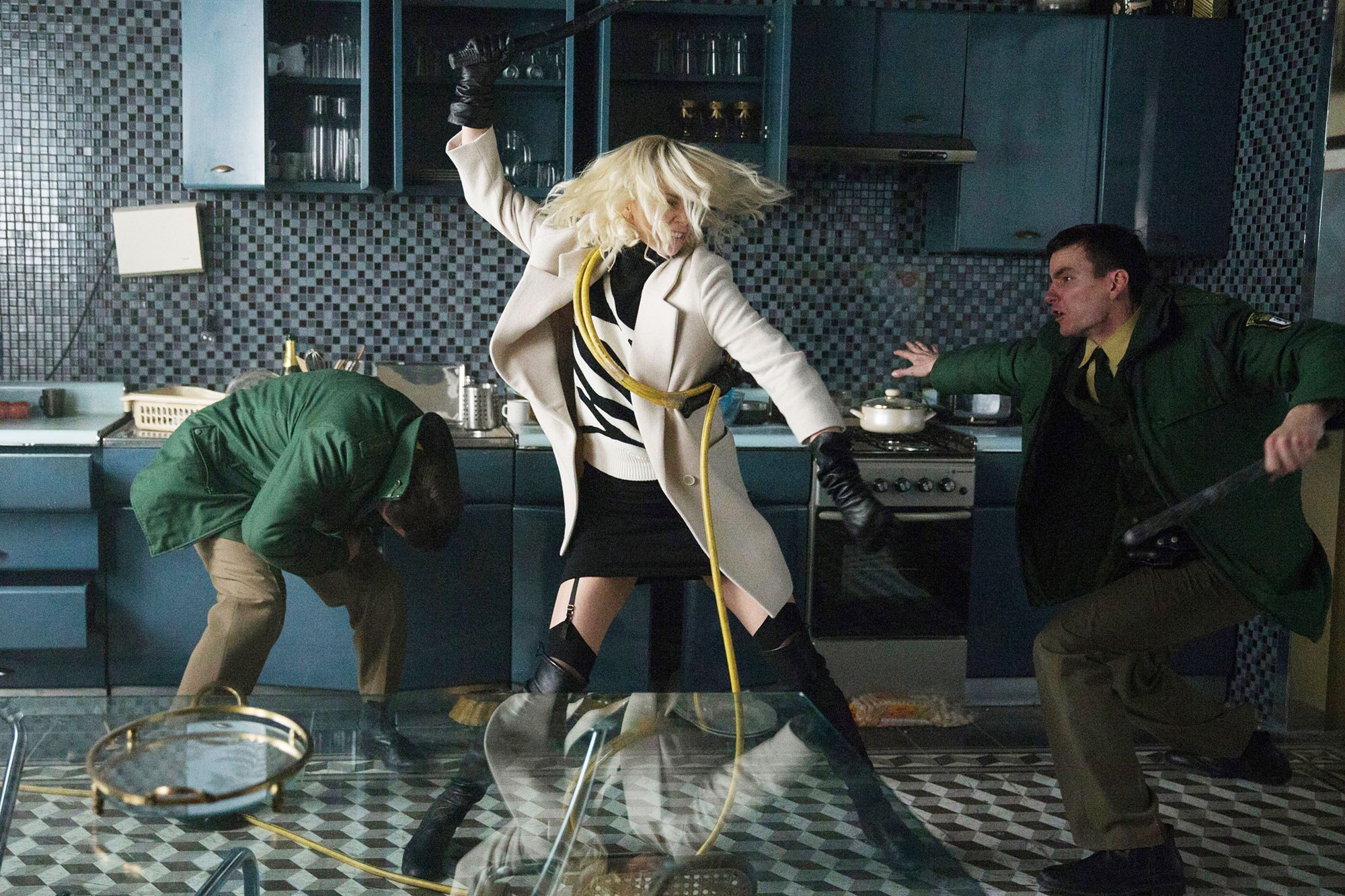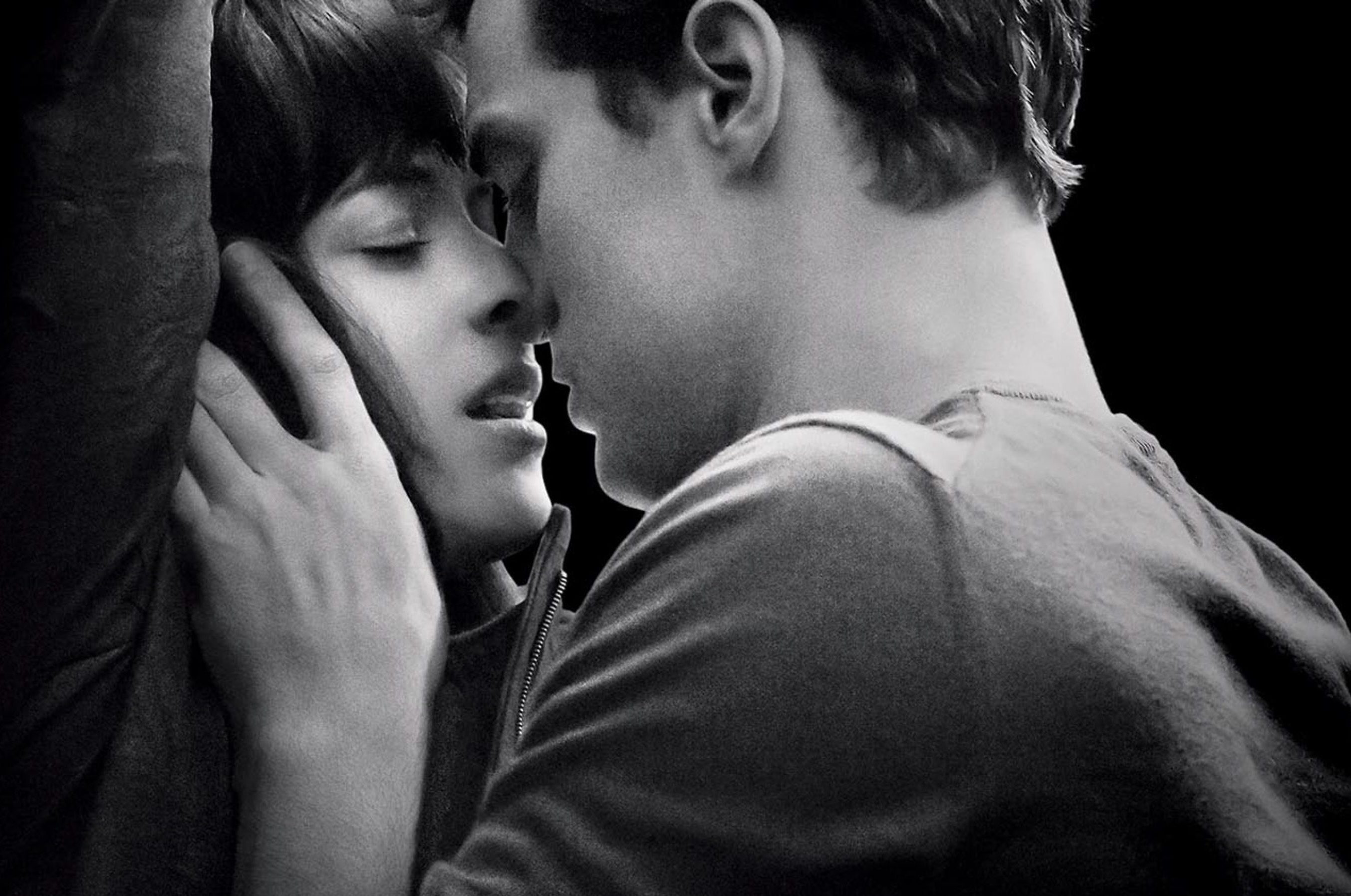
Why Have Trailers Become So Revealing?
If you’re a regular theatergoer, chances are you’ve probably already found yourself attempting to look away, hands on ears, from a trailer that was revealing more than you needed to know about an upcoming movie. And you’re not alone.
For the past few years, a growing number of audience members have complained about trailers in theater and online that deliberately give away too many important scenes and plot points. What often feels like condensed series of shots packed with explosions, major revelations, and so many frames per second that it may actually give someone a seizure, has become a serious concern.
In an age when our consumption of films and TV series is at a peak, meaning more competition on the market, big studios have to find new ways to excite spectators and lure them into theaters – at the cost of disclosing crucial elements of their productions while promoting them, that is.
While, from their angle, what most would consider an approach that puts people off, actually works, a 2013 survey shows that nearly half of Americans believe movie trailers are too revealing, which tends to influence their decision to go to the theater.
So why are trailers still becoming increasingly less secretive? And more importantly, what makes Hollywood so certain that showing more is the best strategy?
Getting value for money
“The studios need to pack in as much information into the trailer as they can, just to make it a remarkable product, but unfortunately it spoils the experience for the audience,” explains producer Sam Balcomb, co-founder of Rainfall Films, a company that creates promotional content for major movie studios and TV networks. “Now they’re ruining it because they want to pick the biggest shots – the money shots, the special effects shots that may show main characters getting killed off – in the trailer because that’s an excitement moment. So the film’s plot is ruined, or can be,” adds Balcomb’s colleague and audio/visual designer, Jeff Dosdon during the same interview with MTV.
Theatrical and TV trailers are considered highly influential weapons in marketing a movie, which is a difficult task. That’s why more often than not, the commercial aspect of a film takes over, at the cost of its creative attributes. Producers want to tease scenes that will excite audiences, even if it means disclosing key parts of the storyline or scarifying details about the fate of characters and ultimately harm the work of filmmakers.

Back in 2015, Colin Trevorrow, the director of Jurassic World, didn’t hide his displeasure when he discovered that his movie’s trailer included a shot of Chris Pratt motorcycling alongside velociraptors, a scene that many could be led to take out of context and think the movie was going to be “bananas” (up till then, velociraptors were not considered to be friendly pets!). “They have shown far more of this movie than I would ever have wanted,” said Trevorrow at the time. “Your suspension of disbelief has to be earned. We’ve been earning it [in the movie], by the time that happens, for an hour and a half … Every movie has its own logic, and if you’re introducing a new set of rules, to just show people snippets of something without them understanding the set of rules that define the movie, can be challenging for an audience.”
Trevorrow was not the first director to criticize the unpleasant liberties taken by distributors when promoting a film. Probably the most controversial example yet, the trailer for Terminator Genisys (released the same year as Jurassic World), which marked Arnold Schwarzenegger’s return as the (in)famous humanoid cyborg T-800 next to Game of Thrones‘s Emilia Clarke, made many eager fans – and director Alan Taylor – very unhappy after one of the promotional videos showed John Conor (Jason Clarke) as the movie’s villain, a reveal supposed to be one of the film’s most surprising plot twists.
Comparably the same year, Southpaw’s director, Antoine Fuqua, complained that the trailer created to market his boxing movie starring Jake Gyllenhaal and Rachel McAdams disclosed the most important scene of the film when, after only 1 minute, Adams is seen dying from a gunshot, while the emotional sequence actually only happens a third of the way in the film. “The audience sometimes, I guess, needs a little more, especially for this type of movie,” said Fuqua. “So I had to roll with it.”
And spoilers are not the only unpleasant outcome of marketers’ desire to produce exhilarating trailers. Every so often, they can also leave viewers feeling fooled by promoting something very different from what’s actually released in theaters.
We all know the story of that woman in Michigan who, back in 2011, sued the creators of Nicolas Winding Refn’s Drive for false advertising because, after having watched the trailer, she expected a racing movie and was disappointed to discover a neo-noir, slow crime film, instead. And in 2013, the trailer for Wes Anderson’s The Grand Budapest Hotel left people expecting a hilarious comedy pretty confused. Also, a year before, Man of Steel‘s trailer made quite some waves as well for its emotional and strong narrative aspect, which viewers couldn’t find in the actual movie.
A matter of length?
In 2014, the National Association of Theatre Owners thought they would solve the problem by proposing a rule that would reduce the duration of movie trailers to 2 minutes (30 seconds less than the previous norm). A decision that, of course, didn’t please Hollywood’s studios, but felt like the logical answer to many complaints received from members of the public that trailers divulged crucial parts of the plot and lasted too long. The suggested rule, as we now know, never passed.

Although trailers “feel” longer, it’s important to note that their length hasn’t really changed over the years. Actually, movie trailers nowadays are even shorter than in the ’90s (3 minutes) or even the 4 to 5 minutes of the ’50s and ’60s. Currently, the Motion Picture Association of America (MPAA) still restricts trailers to 2.5 minutes. However, each production company is granted 1 exception a year and allowed to release a 3-minute version (e.g. Man of Steel).
Length is therefore not the source of the problem. In fact, shortening trailers is far from being the solution as it could simply worsen the issue. Why? What really makes trailers perceived as more substantial is the fact that they tend to be overpacked, faster, more visual, and even in some cases, feature frames produced especially for them. What used to be introduced by the famous “In a world…” voice-over has lost its original narrative structure, and with it an actual connection with the audience.
The spoiler dilemma
The real question is: Do we go see movies because of what we know, or because of what we don’t?
According to experts in the trailer-making business, the more the audience knows about a film, the likelier it is to go see it. “If someone is going to pay $20 to go on opening weekend to see the movie, they want to know they are making a pretty good investment,” explains Matt Brubaker, President of Trailer Park, a leading content and entertainment marketing Hollywood agency, which produced trailers for movies like Fifty Shades Darker, Patriots Day, and Cars 3. “As much as people complain that trailers give away too much, 9 out of 10, the more of the plot you give away, the more interest you garner from the audience.”
Although Brubaker’s opinion may surprise, he does have a point. A recent research by UC San Diego’s professor, Nicholas Christenfeld, came to the conclusion that spoilers, as a matter of fact, make people enjoy movies more. As part of his study, Christenfeld created 2 groups of students who would watch the same film for the first time. To the first group, the professor would say nothing. To the second one, he would reveal the end. After the movie was shown to each group, he would run a survey to measure how much everyone enjoyed the experience. The results were pretty unexpected. Students who knew the film’s ending actually had more pleasure watching it than those who didn’t!
“The point is, really we’re not watching these things for the ending,” says Christenfeld. “I point out to the skeptics, people watch these movies more than once happily, and often with increasing pleasure.”
But another research dating from the same year might well contradict those findings – or at least, shed some light on the real problem. The study, performed by Innerscope Research, found that viewership was highest when audiences were engaged emotionally, meaning that studios should hold back on visual effects and focus more on the narrative aspect of trailers. To support this theory, analysts looked back at a 2013 survey focusing on responses from spectators to The Hobbit: The Desolation of Smaug‘s trailer, which left over 80% of cinemagoers disappointed as they felt they saw too much of the movie and admitted it had an impact on their desire to see it.

But despite our continuous displeasure, the reality is, we love spoilers as much as we hate them. Just look at the over-the-top reactions following the release of highly-anticipated trailers for proof. Movies like Star Wars: The Last Jedi, or most recently, any promotional content for upcoming episodes of Game of Thrones are being overanalyzed, to the point of being deconstructed shot by shot to make desperate guesses and speculate about what will happen next.
Even more surprising, the amount of news related to on-set photos of productions still in the making are becoming increasingly popular online. Take the upcoming Deadpool 2, Avengers: Infinity War or the Han Solo movie, for example. Internet users and the media seem to jump on every stolen picture they can find to satisfy everyone’s curiosity, even though it could result in the disclosure of major spoilers.
In the end, it’s essential to understand that marketers don’t create trends out of thin air, but adapt to our expectations. And whether we like it or not, numbers seem to continuously prove that trailers containing big revelations don’t really have a significant negative impact on the amount of tickets sold. Quite the opposite.




